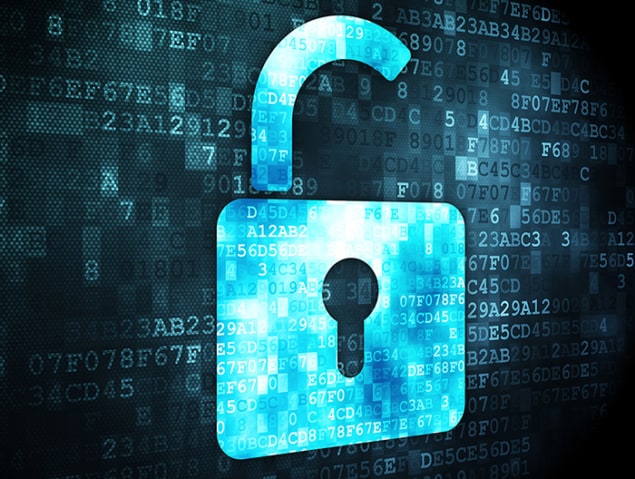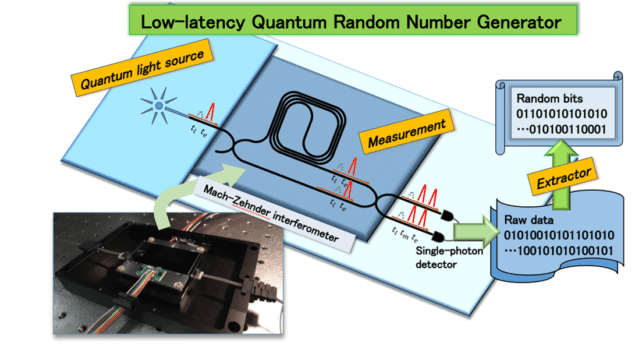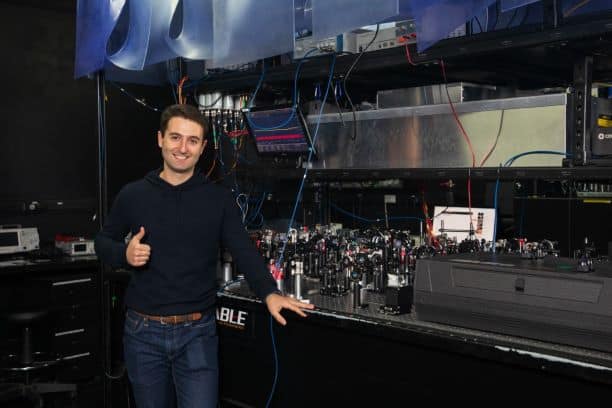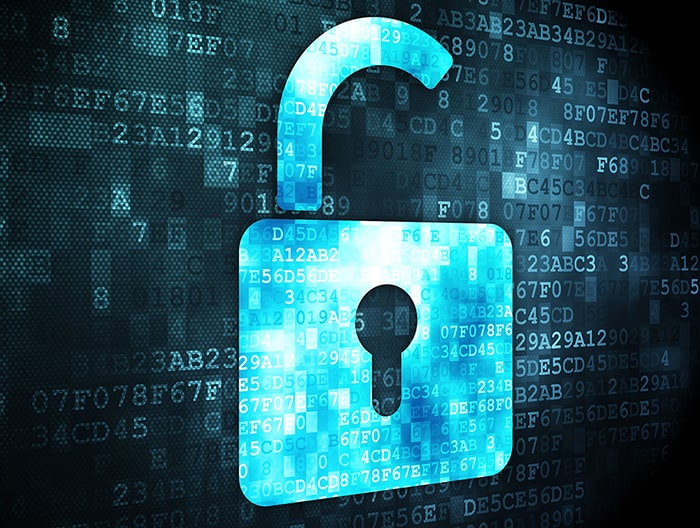
Researchers at Japan’s Nippon Telegraph and Telephone Corporation (NTT) have built a quantum random number generator (QRNG) that delivers random bits periodically with high speed and is robust against noise that would otherwise compromise the bits’ security. Where previous QRNGs needed to run for a long time before they could generate random bits at high average rates, Yanbao Zhang and colleagues devised a way to do away with this so-called “latency” and fight against imperfections in their QRNG device. These innovations made it possible to certify random bits in less time. Their QRNG could find application in computation and communication networks, where low-latency random number generation is necessary for high-speed encryption.
Randomness is key to many applications, including numerical simulations, statistical sampling, and cryptography. Simulations and sampling require high-speed, high-rate random number generation, while cryptography prizes secure (certifiable) random bits.
Since quantum measurement is inherently probabilistic, quantum mechanics naturally lends itself to random number generation. The distinguishing feature of QRNGs lies in the fact that output random bits are certifiable based only on measurement observations with verifiable physical conditions. “One can certify that the random bits generated by a QRNG are pretty close to the ideal random bits that are completely unknown by an external adversary who may hold additional information about the QRNG device,” Zhang explains.

Low latency despite adversarial attack
To reduce the latency of their device, the NTT team developed an efficient method for certifying quantum randomness against both classical and quantum adversaries. A quantum adversary is defined as someone who has access to quantum resources, including quantum memories that store an arbitrary state entangled with the state prepared in the experiment. A classical adversary, in contrast, can only store a classical description of measurement results. Zhang and colleagues demonstrated that their device could certify a block of 8,192 random bits every 0.1 seconds with high security against all quantum adversaries, or a block of 2 x 8,912 random bits against all classical adversaries.

Fast quantum random number generator could advance cryptography on the cheap
Besides reducing latency, the new method has a further advantage: it requires neither the source of the random numbers nor the measurement apparatus to be characterized in full. Therefore, practical security with realistic devices is guaranteed. In contrast, previous methods for certifying randomness against quantum adversaries addressed imperfections in either the source or measurement, but not both.
Now that they have realized a high-speed, high-security QRNG, Zhang and colleagues want to reduce the size of their QRNG so that it can be used in mobile phone technology. They also suggest that the QRNG they developed could be used to build high-speed randomness servers (beacons) that periodically produce fixed blocks of certifiable and public random bits, which would be a boon to communication networks.
